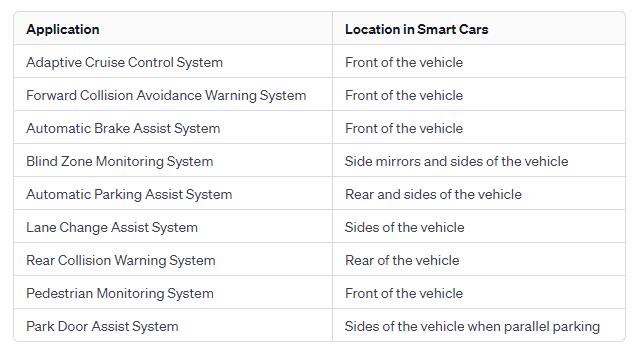Advancements in In-Vehicle Millimeter Wave Radar Testing
In the dynamic landscape of intelligent networked vehicles, in-vehicle millimeter-wave radar stands as a pivotal component of the Advanced Driver Assistance Systems (ADAS) environment sensing system. As autonomous driving technology continues to evolve, the significance of vehicle-mounted millimeter-wave radar becomes increasingly evident. However, despite its vital role, the testing and certification methodologies, standardization, and evaluation systems for millimeter-wave radar are still in the early stages of development. This article aims to shed light on the current state of millimeter-wave radar testing and address the challenges faced in this domain.
Millimeter Wave Radar Technology Overview
1. Definition and Characteristics
Millimeter-wave radar operates within the 30-300GHz frequency band, exhibiting wavelengths ranging from 1 to 10mm. Combining attributes of both microwave and far-infrared wave spectra, millimeter-wave radar boasts long detection distances, rapid response speeds, and robust adaptability. With a detection range exceeding 250m, propagation at the speed of light, and a simple modulation process, it swiftly measures target information such as distance, speed, and angle. Notably, millimeter-wave radar penetrates effectively through adverse weather conditions like rain, snow, and fog, and remains unaffected by factors such as color, temperature, and illumination, presenting an all-weather solution.
2. Classification
Millimeter-wave radar is categorized into four frequency bands: 24GHz, 60GHz, 77GHz, and 79GHz. The prevalent frequency bands are 24GHz and 77GHz, with 79GHz showing promise for future development. Based on detection distance, it can be classified into close range (SRR, less than 60m), medium range (MRR, about 100m), and long range (LRR, more than 200m). In terms of working principle, millimeter-wave radar is broadly divided into pulse type and FM type, with most vehicle-mounted versions utilizing FM technology.
3. Working Process
The operational sequence of millimeter-wave radar involves transmitting millimeter waves outward through the antenna. The receiver captures the reflected signal from the target, and the signal processor swiftly and accurately processes this information. The processed data includes the relative distance between the vehicle and surrounding objects, relative speed, angle, and direction of travel. Subsequently, target tracking and identification are performed based on the explored object information, and the central processing unit processes the dynamic information of the vehicle. After prudent decision-making, the driver is informed or warned through various means such as sound, light, or tactile feedback. Alternatively, the system may actively intervene in the vehicle's operation through control devices, ensuring driving safety, comfort, and reducing the likelihood of accidents.
4. Main Applications
Millimeter-wave radar finds extensive applications in various advanced driver assistance systems (ADAS) of intelligent networked vehicles. Its utilization spans adaptive cruise control systems, forward collision avoidance warning systems, automatic brake assist systems, blind zone monitoring systems, automatic parking assist systems, lane change assist systems, rear collision warning systems, pedestrian monitoring systems, park door assist systems, and more. The following table outlines the distribution of millimeter-wave radar applications and locations in smart cars.

In conclusion, the integration of millimeter-wave radar in intelligent vehicles underscores its critical role in enhancing safety, comfort, and the overall driving experience. As the technology advances, concerted efforts are required to address the existing challenges and establish robust testing and certification frameworks for this indispensable component of autonomous driving systems.
Contact: Mr.Tom
Phone: 0086-755-85279352
E-mail: sales@szjeavox.com
Add: FL7-8,4 Bldg,Honghui Industrial Park,Liuxian 3 Rd,68 Zone,Bao'an,Shenzhen, China